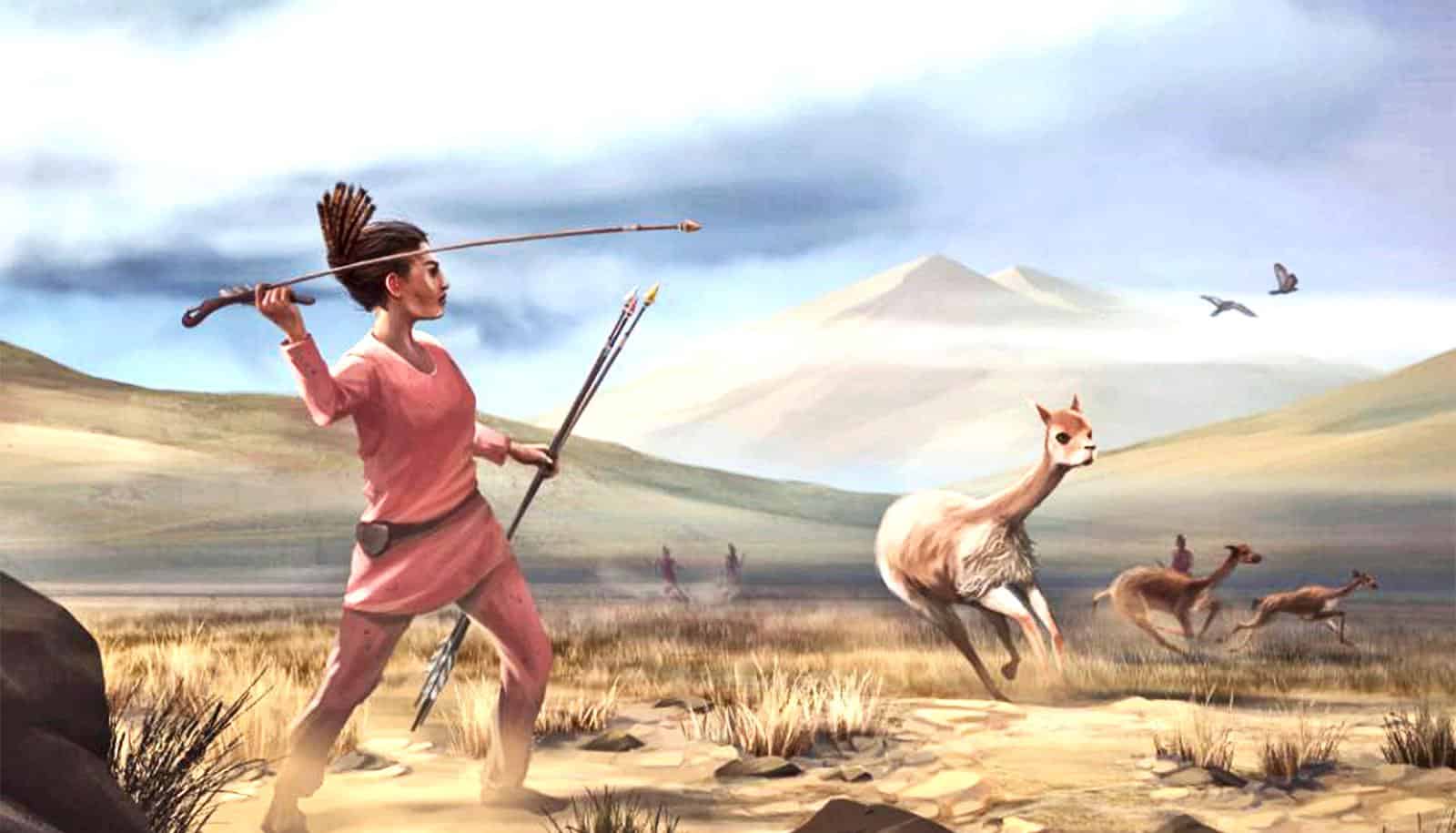
Foraging societies have long been characterized by a division of labor, where men typically assumed the role of hunters, while women gathered plant products for sustenance. The long-held assumption is that things had always been like this since our species emerged and up until the advent of agriculture only 12,000 years ago.
However, recent archaeological research has unearthed evidence that questions this traditional paradigm. As much as 79% of living foraging societies demonstrate female hunting. That’s not all.
It is likely that women in hunter-gatherer communities not only hunted but also participated in warfare throughout the lineage of Homo sapiens.
An overlooked narrative
The earliest fossils of Homo sapiens date from around 300,000 years ago. For 96% of the time humans have existed, we’ve relied on hunting game, fishing, and gathering wild plants for food.
Understanding the hunter-gatherer lifestyle is crucial for comprehending the evolutionary forces that shaped our species. However, these ancient societies haven’t left any writings that may tell us about how they were organized or how they lived. We can only make educated assumptions based on the limited fossils, stone tools, and artifacts that archeologists have found.
But the interesting thing is that hunter-gatherers aren’t actually extinct. Even in today’s industrialized world, there are still a few pockets of hunter-gatherer communities that still practice this way of life. These include the Tiwi people of Australia, the Hadza of northern Tanzania, the Ganij of New Guinea, and the Matsés people of the Brazilian Amazon.
Researchers led by Abigail Anderson from the Seattle Pacific University reviewed the findings of previous studies and data gathered on 63 living hunter-gatherer societies from across the world. They were shocked to find that in 79% of the analyzed societies, women actively participated in hunting, regardless of their status as mothers. In fact, these female hunters often carried their children along with them on expeditions, including infants.
These enterprising women weren’t just opportunistically hunting game while performing other activities. More than 70% of female hunting was intentional, specifically stalking and targeting game animals.
Furthermore, women exhibited a diverse range of weapon choices and hunting strategies, often surpassing men in their adaptability. For instance, Agta women in the Philippines utilize different hunting tools compared to Agta men, who commonly rely on bows and arrows. In these communities, women often opt for knives and engage in daytime group hunts, whereas men typically hunt alone at night or with a single partner.
Women in foraging societies also display different preferences for the type of game they prefer compared to their male counterparts. In the Tiwi society of Australia, women primarily hunt small animals, while men focus on larger game. But among the Matses society of the Peruvian Amazon, women excel at hunting large game using sticks and machetes.
The study also shed light on the crucial role women play in teaching hunting practices within foraging societies. They are actively involved in passing down hunting knowledge. Moreover, women’s hunting efforts were not limited to small game, but encompassed all sizes, with a particular focus on larger game.
Challenging gender bias in archaeology
If women were equally prolific hunters in ancient hunter-gatherer societies, one may assume that their skill in weapon handling was likely put to good use in times of warfare too. There is evidence to back this up. For instance, Randall Hass, an archaeologist at the University of California, Davis, described the 9,000-year-old burial of a huntress in the Andes Mountains. Her final resting place housed a kit of stone tools likely used for hunting, butchering, and preparing animal hides.
These findings challenge deeply ingrained stereotypes and upend prevailing narratives about gender roles in foraging societies. Previously, such biases influenced archaeological interpretations, leading some researchers to hesitate when associating objects buried alongside women with hunting tools. The authors of the study urge a reevaluation of such evidence and caution against the misapplication of the idea that men are hunters while women are gatherers in future research endeavors.
The research conducted at Seattle Pacific University, along with evidence from various cultures worldwide, strongly indicates that women actively participate in subsistence hunting in the majority of foraging societies. This insight deepens our understanding of gender dynamics within these societies and challenges preconceived notions that have persisted for centuries.
As we unravel the mysteries of our past, it becomes increasingly clear that the roles of men and women in human history are far more complex and diverse than previously imagined.
The findings are detailed in a paper published in the journal PLoS ONE.


